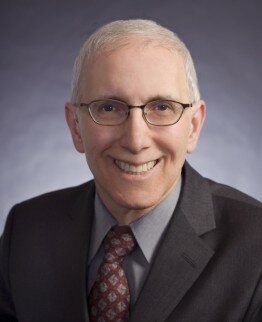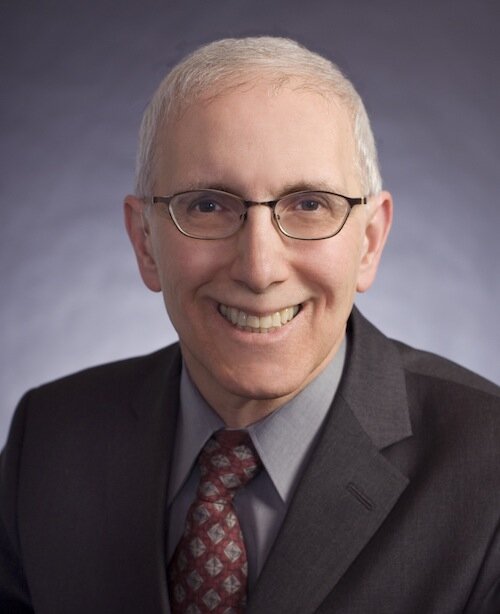
An Open Letter to the Seattle City Council:
Soon you will have the opportunity to pass a bill that will help protect and promote the health of Seattle’s workers and businesses. As economists, we urge you to pass the paid sick days ordinance, City Council Bill 117216, to ensure that workers can take time off to recover from their own illness, to care for a sick family member or to seek medical care.
Right now, nearly 40 percent of Seattle’s workers, filling an estimated 190,000 jobs, have no paid sick days.(1) That means many of these workers come to work sick rather than lose their job or a day’s wage – and that puts the public’s health at risk. Many of the workers without paid sick days are in jobs – food service, childcare, eldercare and retail occupations – that place them in direct contact with the public:
• More than 30,000 of Seattle jobs without paid sick leave are in the accommodation and food service industries.(2)
• More than 20,000 of those jobs are in health services.(3)
Bottom line: paid sick days are least available to the very workers who have the least ability to absorb the loss of pay and are most vulnerable to losing their jobs. Among low-wage private-sector workers, only one in five has access to paid sick days, according to the U.S. Bureau of Labor Statistics.(4) Another new study from the Economic Policy Institute found that loss of a few days’ pay for a low-wage worker can equal a month’s worth of groceries.(5)
Providing paid sick days in Seattle will protect public health, create a healthier workforce, help businesses cut costs and speed our economy’s recovery.6 When sick workers are able to stay home, the spread of disease slows and workplaces are healthier and more productive. Workers recover faster from illnesses, get timely medical care, and rely less on emergency room care, cutting health care costs.(7) Businesses also benefit from increased worker loyalty, reduced turnover, lower replacement costs, and fewer losses from low productivity.(8)
But despite these facts, you will no doubt hear doomsday predictions from business lobbyists who oppose this measure. However, the real-life experience of firms that provide sick leave and a growing body of academic research show beyond any doubt that the costs of providing paid sick days are extremely small.
The benefits – for employees, employers, and the public – are substantial.(9) We urge you to pay close attention to evidence and data, not unfounded speculation about the impact this legislation will have on our economy.
New evidence published this year proves that most businesses are not harmed, and many benefit from paid sick days:
• A March study on the impacts of enacting paid sick legislation by the Economic Policy Institute concluded, “The data clearly show that the potential cost of providing paid sick days is in fact extremely small relative to the total sales of a firm. In addition, available research shows cost- savings for employers that provide paid sick days, largely resulting from reduced employee turnover.” According to the same study, among workers who currently have access to five paid sick days, the industry-weighted average number of days taken is 2.41 days; if employees used this average number of paid sick days, the total cost would be 0.19% of sales.(10)
• In addition to substantial research and data on this topic, there is real-world experience that informs our view as economists. When the City of San Francisco enacted its Paid Sick Leave Ordinance (PSLO), critics there raised many of the same concerns that lobbyists have raised in Seattle. Four years later, the number of small and large businesses in the city has grown — and growth in the city has been stronger than in the surrounding five counties with no paid sick leave laws.(11) And San Francisco was just rated as the world’s third best city for business and innovation by the global accounting firm PriceWaterhouseCoopers. Employers and employer associations in San Francisco have publicly embraced the policy, with the Golden Gate Restaurant Association calling it “the best public policy for the least cost.”(12)
Additionally, ensuring access to paid sick days is a critical way to modernize workplace standards in light of substantial demographic and economic changes over the past fifty years. Today close to two-thirds (64 percent) of mothers work outside the home and most families with children have two working parents. In Seattle, three-fourths of school-aged children and 64% of preschoolers have all parents in the workforce.(13)
Nearly half of all Americans (48 percent) are unmarried and many of them are sole breadwinners in families with children. One in three working women provides care for aging parents.(14) Many employers have adapted their policies in recognition of the importance of helping workers meet both work and family responsibilities. Indeed, some of the fastest growing and most innovative employers are those who have embraced smart, modern employment practices, enabling them to attract and retain the dedicated and talented workforce they need to compete.
Finally, as you contemplate your vote, we ask you to consider the following benefits of paid sick days to Seattle’s workers, businesses and economy:
• Paid sick days save employers money by reducing turnover. Replacing workers can cost anywhere from 25 to 200 percent of annual compensation. The cost of replacing workers, including advertising, recruitment, interviewing, training, and lost productivity, often outweigh the cost of paid sick time to retain existing workers.(15)
• When sick workers can stay home, the spread of disease slows and workplaces are healthier and more productive. Further, workers recover faster from illness and obtain timely medical care — enabling them to get back to work sooner and limiting health care costs.(16)
• Providing paid sick days dramatically reduces the cost of “presenteeism” – the lost productivity stemming from employees coming to work sick. According to the Society of Human Resources Management, presenteeism costs American employers $180 billion annually, far outpacing the cost of absenteeism.(17)
• Recent analysis from economists at the Center for Economic and Policy Research shows that paid sick days can help lower the unemployment rate by protecting workers from firings due to their own or a family member’s health needs.(18)
• Research in a forthcoming report from the Institute for Women’s Policy Research shows that access to paid sick days reduces use of hospital emergency departments by 14% by allowing workers to use primary care. Because emergency care is more expensive than primary care, making paid sick days universal nationally would decrease health care costs nationwide by $1 billion while improving health outcomes. Reduced contagion, especially from seasonal and pandemic influenza, would also prevent millions in health costs.(19)
• The cost of providing paid sick days to employers, while small, also represents wages paid to employees. These employees spend their earnings in the local economy. When employees lose income or a job because they are ill, that too is a “cost” to our economy.
As the research makes clear, providing paid sick days is smart business. It reduces the serious and costly public health threat created by people coming to work sick, reduces employee turnover and replacement costs, and increases employee productivity. We must enact policies that will help employers keep people at work, and working productively.
As economists, we believe providing a minimum floor of paid sick days is the kind of policy we should be promoting to improve employee retention, minimize layoffs, promote work-life integration, enhance economic security for working families, and create a level playing field among employers. Please protect and promote the health of Seattle’s workers, businesses and economy and vote to pass City Council Bill 117216.
Signatures:
Melissa Ahern
Associate Professor
Washington State University
Katie Baird
Associate Professor
University of Washington, Tacoma
Kenneth Casavant
Professor
Washington State University
S. Charusheela
Associate Professor
University of Washington, Bothell
Colin Danby
Professor
University of Washington, Bothell
Peter Dorman
Professor
Evergreen State College
Frederick S. Inaba
Professor Emeritus
Washington State University
Stacey Jones
Visiting Instructor
Seattle University
Farrokh Kahnamoui, Ph.D.
Visiting Assistant Professor
Western Washington University
Russell Lidman
Professor Emeritus, Retired
Seattle University
Robert Plotnik
Professor of Public Affairs
University of Washington
Meenakshi Rishi
Associate Professor
Seattle University
1Marilyn P. Watkins. “Evaluating Paid Sick Leave: Social, Economic, And Health Implications For Seattle.” (Seattle: Economic Opportunity Institute, 2011), available at http://seattlehealthyworkforce.files.wordpress.com/2011/05/evaluating-paid-sick-leave.pdf.
2 Ibid.
3 Ibid.
4 Joint Economic Committee of the U.S. Congress, “Expanding Access to Paid Sick Leave: The Impact of the Healthy Families Act on America’s Workers” (Washington, DC, March 2010).
5 Elise Gould, Kail Filion, and Andrew Green. “The Need for Paid Sick Days.” (Washington DC: Economic Policy Institute, 2011), available at http://w3.epi-data.org/temp2011/BriefingPaper319-2.pdf.
6 Joint Economic Committee of the U.S. Congress, “Expanding Access to Paid Sick Leave: The Impact of the Healthy Families Act on America’s Workers”.
7 Robert Drago, Claudia Williams, Kevin Miller, and Youngmin Yi. “Paid Sick Days and Health: Cost Savings from Reduced Emergency Department Visits.” (Washington DC: Institute for Women’s Policy Research, 2011).
8 Robert Drago and Vicky Lovell, “San Francisco’s Paid Sick Leave Ordinance: Outcomes for Employers and Employees” (Washington, DC: Institute for Women’s Policy Research 2011).
9 Kevin Miller and Claudia Williams, “Valuing Good Health in Connecticut: The Costs and Benefits of Paid Sick Days” (Washington, DC: Institute for Women’s Policy Research, 2010).
10 Douglas and Elise Gould Hall. “Paid Sick Days: Measuring the Small Cost for Connecticut Businesses.” (Washington DC: Economic Policy Institute, 2011), available at http://www.epi.org/page/-/pdf/pm177.pdf?nocdn=1.
11 Drago and Lovell, “San Francisco’s Paid Sick Leave Ordinance: Outcomes for Employers and Employees”.
12 James Warren. “Cough If You Need Sick Leave.” (New York: Bloomberg, 2010), available at http://www.businessweek.com/magazine/content/10_24/b4182033783036.htm.
13 Heather Boushey and Ann O’Leary, eds., The Shriver Report: A Woman’s Nation Changes Everything (Washington, DC: Center for American Progress,2009).
14 Ibid.
15 Williams, “Valuing Good Health in Connecticut: The Costs and Benefits of Paid Sick Days”.
16 Drago, “Paid Sick Days and Health: Cost Savings from Reduced Emergency Department Visits”.
17 Stephen Miller. “Beware the Ill Effects of Sick Employees at Work ” (Alexandria, VA: Society for Human Resource Management, 2008).
18 Eileen Appelbaum. “Paid Sick Days: A Win for Employees and the Economy.” (Washington, DC: Center for Economic and Policy Research, 2011), available at http://www.cepr.net/index.php/op-eds-&-columns/op-eds-&-columns/paid-sick-days-a-win-for-employees-and-the-economy.
19 Drago, “Paid Sick Days and Health: Cost Savings from Reduced Emergency Department Visits”.
